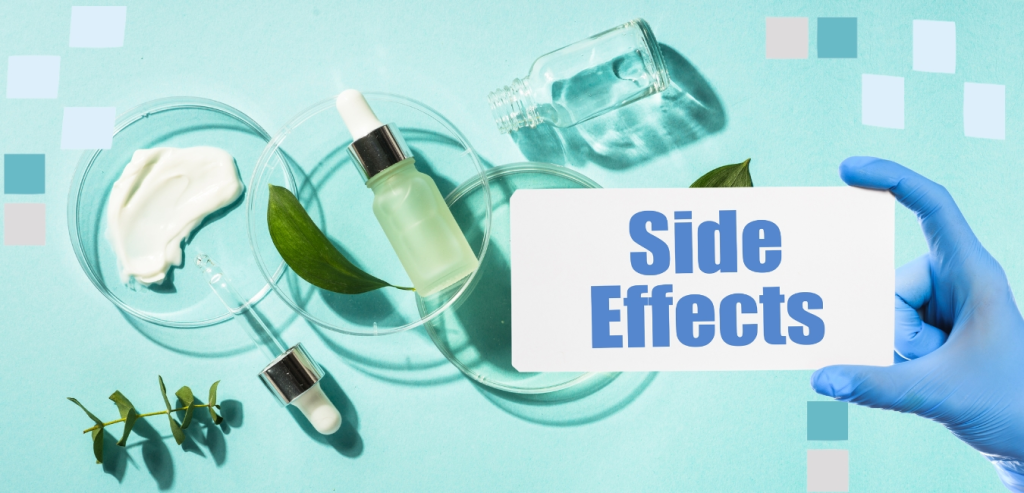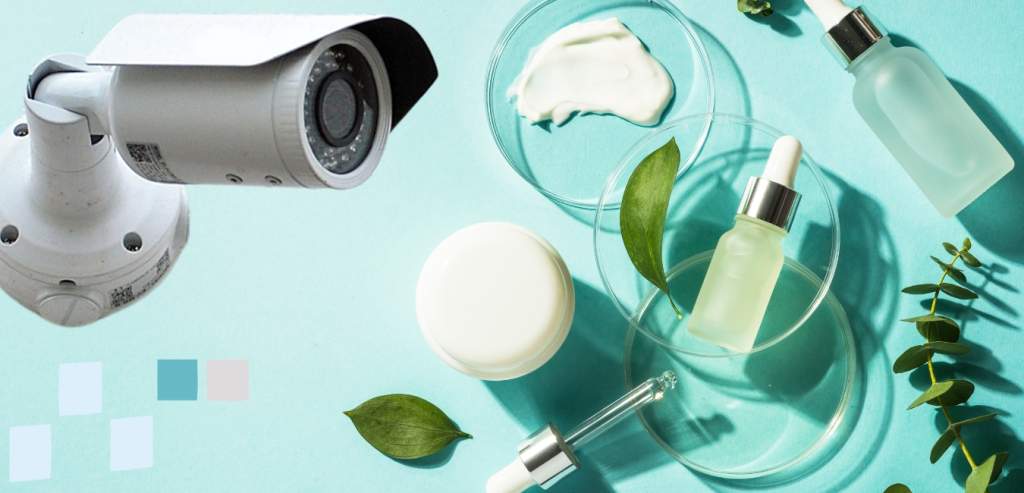Every day, a lot of people experience side effects after using cosmetics, but not everyone knows that they can report them to the responsible authorities. Why reporting adverse reactions is important and how it affects the safety of cosmetics? If you want to find out what cosmetovigilance is – we invite you to read the article.
Pharmacovigilance vs cosmetovigilance – what is the difference?
The term “pharmacovigilance” defines activities related to the collection, detection, evaluation, surveillance and prevention of adverse drug reactions. Recently, attention has also been focused on the safety of herbal products and cosmetics. “Cosmetovigilance” was introduced as a term used to define the oversight conducted by the industry to ensure the safety of cosmetics.
How to recognize a side effect?
The “adverse reactions” is understood as any unfavorable and unintended effect of a cosmetic placed on the market, used in normal or other foreseeable conditions. The most common adverse reaction of cosmetics up to 96% is skin irritation. Contact allergy, contact urticaria, photosensitisation, cosmetic acne, pigmentation disorders and systemic disorders have been reported in the cosmetovigilance system.
What is reassuring is that only severe 1-4% of reported adverse reactions are considered serious, which means that it causes temporary or permanent functional incapacity, disability, hospitalization, congenital anomalies, immediate life-threatening or death.
Wiechuła et. Al. (2014) performed the research in which 184 female students of the Medical University of Silesia in Katowice were asked about adverse reactions after cosmetic product use reported to physicians, and awareness of the availability of that option.
Out of 72 respondents who ever experienced an adverse reaction after using a cosmetic, only 8 (11.1%) reported this fact to a doctor or cosmetic manufacturer. Only 106 (57.6%) had heard of such a possibility. The greatest knowledge in this field was demonstrated by cosmetology students.
More than half of the respondents (101 people, 54.9%) did not know whether they would decide to report it in the event of an adverse reaction after using a cosmetic. According to the majority of respondents (140 people, 76.1%), consumers are not sufficiently informed about the safety of using cosmetics and possible side effects. The concept of cosmetovigilance is not widely known.
Adverse event and…. What is next?
After observing an adverse reaction to a cosmetic, you should contact a doctor, the manufacturer or the distributor of the product. Contact details can be found on the packaging of the cosmetic or on the website. Often, manufacturers also provide the telephone number of the consumer hotline, where complaints and reports of adverse events are accepted.
When reporting a case of an adverse reaction to a cosmetic, remember to prepare the following information:
- the date when the adverse reaction occurred
- the product identification data (batch number, name)
- your personal and contact details
- a brief description of the case (symptoms, time elapsed from using the product to the onset of symptoms).

Each reported case of an undesirable effect of a cosmetic is scrupulously assessed by the manufacturer. The rules for their assessment are described in the European Commission’s guide and in the guidelines of the Cosmetics Europe association.
After receiving a serious adverse event, the manufacturer has 20 days to submit a report to the responsible authorities, in Poland – Nofer Institute of Occupational Medicine. This center is supervised by the Chief Sanitary Inspectorate and this is the administrator of all data collected in a System of Information on Serious Adverse Effects Caused by the Use of Cosmetic Products.A manufacturer or distributor who fails to comply with the obligation to inform about a serious adverse reaction is subject to a fine of up to PLN 100,000.
Why is it so important to report side effects?

The occurrence of adverse reactions after using a cosmetic is an increasingly common problem. However, it is difficult to precisely determine its scale, primarily because people affected by it do not report it to the relevant authorities, limiting themselves only to discontinuing cosmetics that cause side effects. The Food and Drug Administration (FDA) recorded 445 reports in 2014, 2085 reports in 2015, and 3567 in 2016. In order to increase the safety of used cosmetics, the public should be educated about the possibility of reporting adverse effects and cosmetovigilance. It has been observed that 89% of baby products labeled as hypoallergenic contained known allergens and irritants (Hamann 2014). If we report side effects, we have a real impact to force companies to provide detailed information and conduct research. As a result, we have an impact on product safety.
The regulations bring many changes:
- a more extensive assessment of the safety of a cosmetic product,
- cosmetic product documentation, labeling in Polish language, marketing declarations, as well as quality control,
- reporting serious adverse reactions to cosmetic products
- impose high financial penalties on producers and distributors for non-compliance with the rules.
Bibliography:
1. Wiechuła D, Szybiak J. The incidence of adverse reactions to cosmetics in students of the Medical University of Silesia in Katowice. Ann. Acad. Med. Siles. 2014;68
2. Lucca J, Joseph R et. al. An observational study on adverse reactions of cosmetics: The need of practice the Cosmetovigilance system. Saudi Pharm J. 2020 Jun;28(6):746-753
3. https://www.fda.gov/cosmetics/how-report-cosmetic-related-complaint/using-adverse-event-reports-monitor-cosmetic-safety
4. Moretti U, Velo G. Cosmetovigilance: the ‘beautiful’ risk. Drug Saf. 2008;31(5):437-9.
5. Act of 4 October 2018 on cosmetic products.
6. Regulation of the Minister of Health of February 20, 2019 on the center administering the Information System on Serious Adverse Reactions Caused by the Use of Cosmetic Products.
7. Regulation of the Minister of Health of February 28, 2019 on the center authorized to access information on a cosmetic product.
8. Regulation (EC) No 1223/2009 of the European Parliament and of the Council of 30 November 2009 on cosmetic products (“Cosmetic Regulation”) (recast).
9. Commission Implementing Decision of 25 November 2013 on guidelines for Annex I to Regulation (EC) No 1223/2009 of the European Parliament and of the Council on cosmetic products (2013/674/EU).
10. Guidelines on the reporting of serious adverse reactions developed by the EC Cosmetics Expert Group. of October 21, 2015
11. Hamann CR, Bernard S, Hamann D, Hansen R, Thyssen JP. Is there a risk using hypoallergenic cosmetic pediatric products in the United States? J Allergy Clin Immunol. 2015;135:1070–1071. doi: 10.1016/j.jaci.2014.07.066.
12. Toklu H, Antigua A,Lewis V Cosmetovigilance: A review of the current literature. J Family Med Prim Care. 2019 May; 8(5): 1540–1545.

